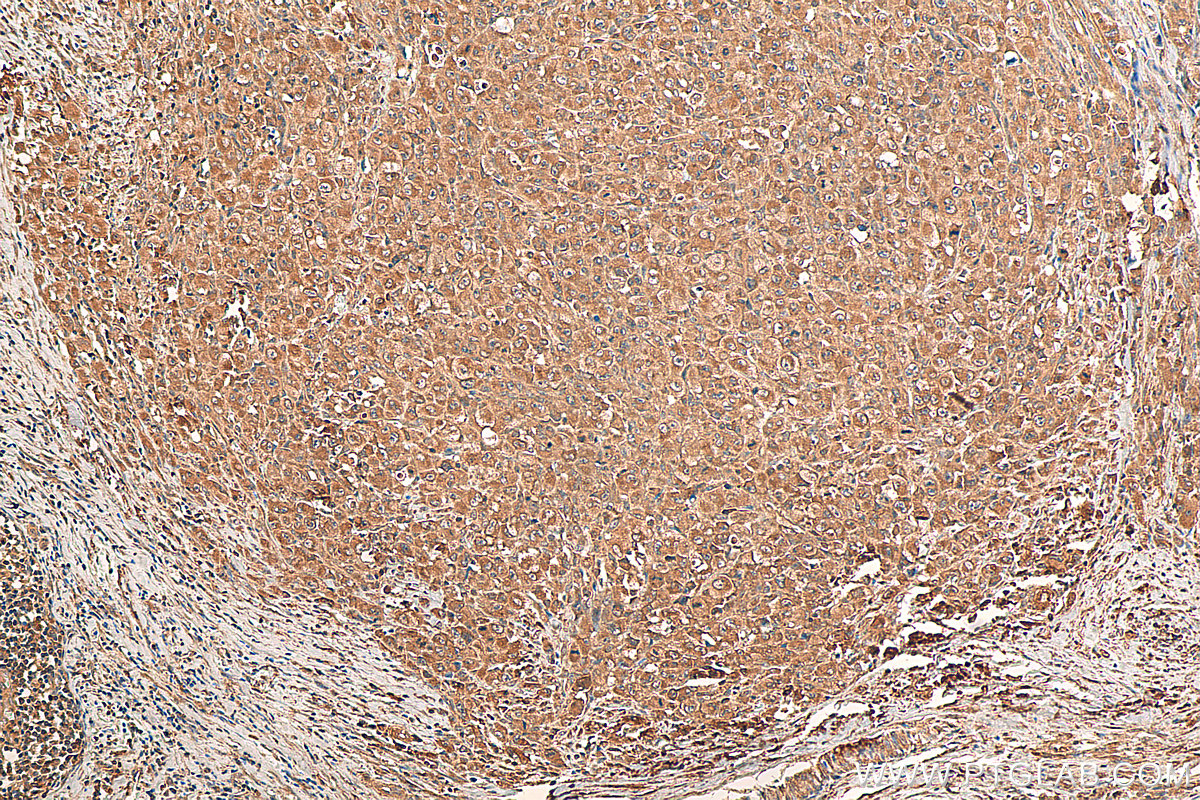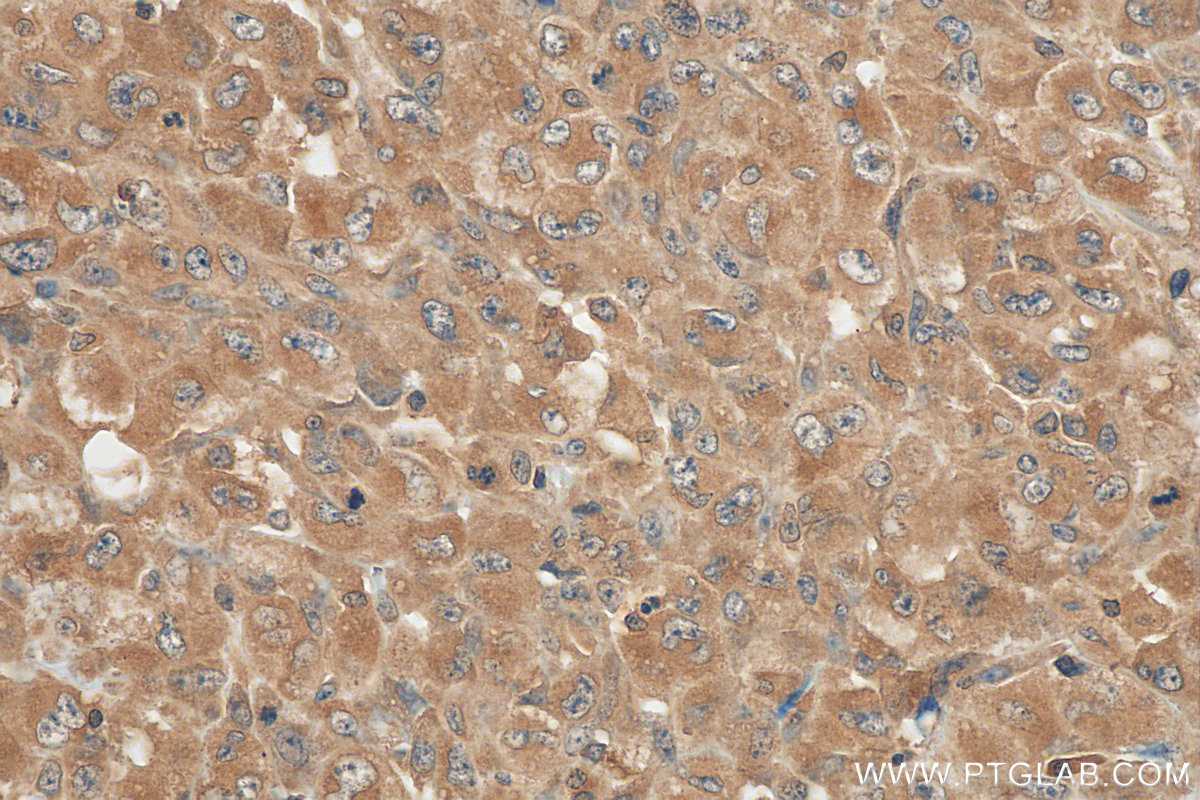验证数据展示
经过测试的应用
| Positive IHC detected in | human lymphoma tissue Note: suggested antigen retrieval with TE buffer pH 9.0; (*) Alternatively, antigen retrieval may be performed with citrate buffer pH 6.0 |
推荐稀释比
| 应用 | 推荐稀释比 |
|---|---|
| Immunohistochemistry (IHC) | IHC : 1:200-1:800 |
| It is recommended that this reagent should be titrated in each testing system to obtain optimal results. | |
| Sample-dependent, Check data in validation data gallery. | |
发表文章中的应用
| WB | See 3 publications below |
产品信息
60321-1-Ig targets ALK in WB, IHC, ELISA applications and shows reactivity with human samples.
| 经测试应用 | IHC, ELISA Application Description |
| 文献引用应用 | WB |
| 经测试反应性 | human |
| 文献引用反应性 | human |
| 免疫原 | ALK fusion protein Ag21493 种属同源性预测 |
| 宿主/亚型 | Mouse / IgG2a |
| 抗体类别 | Monoclonal |
| 产品类型 | Antibody |
| 全称 | anaplastic lymphoma receptor tyrosine kinase |
| 别名 | ALK, ALK tyrosine kinase receptor, Anaplastic lymphoma kinase, CD246, TFG/ALK |
| 计算分子量 | 1620 aa, 176 kDa |
| GenBank蛋白编号 | NM_004304 |
| 基因名称 | ALK |
| Gene ID (NCBI) | 238 |
| RRID | AB_2881432 |
| 偶联类型 | Unconjugated |
| 形式 | Liquid |
| 纯化方式 | Protein A purification |
| UNIPROT ID | Q9UM73 |
| 储存缓冲液 | PBS with 0.02% sodium azide and 50% glycerol , pH 7.3 |
| 储存条件 | Store at -20°C. Stable for one year after shipment. Aliquoting is unnecessary for -20oC storage. |
背景介绍
ALK, also named as CD246, is a receptor tyrosine kinase (RTK) that belongs to the protein kinase superfamily. ALK is usually found in the nervous system and appears to play an important role in the normal development and function of the nervous system. ALK was originally identified as part of the NPM (Nucleophosmin)-ALK oncogenic fusion protein, resulting from the (2;5)(p23;q35) translocation that is frequently associated with anaplastic large-cell lymphoma (ALCL). The EML4 (echinoderm microtubule-associated protein-like 4)-ALK fusion protein have been described in non-small-cell lung cancer (NSCLC), this transforming fusion kinase is a promising candidate for a therapeutic target as well as for a diagnostic molecular marker in NSCLC (PMID: 17625570).
实验方案
| Product Specific Protocols | |
|---|---|
| IHC protocol for ALK antibody 60321-1-Ig | Download protocol |
| Standard Protocols | |
|---|---|
| Click here to view our Standard Protocols |
发表文章
| Species | Application | Title |
|---|---|---|
Eur J Med Chem Discovery of 2,4-pyrimidinediamine derivatives as potent dual inhibitors of ALK and HDAC. | ||
iScience DAB2IP suppresses invadopodia formation through destabilizing ALK by interacting with USP10 in breast cancer |

